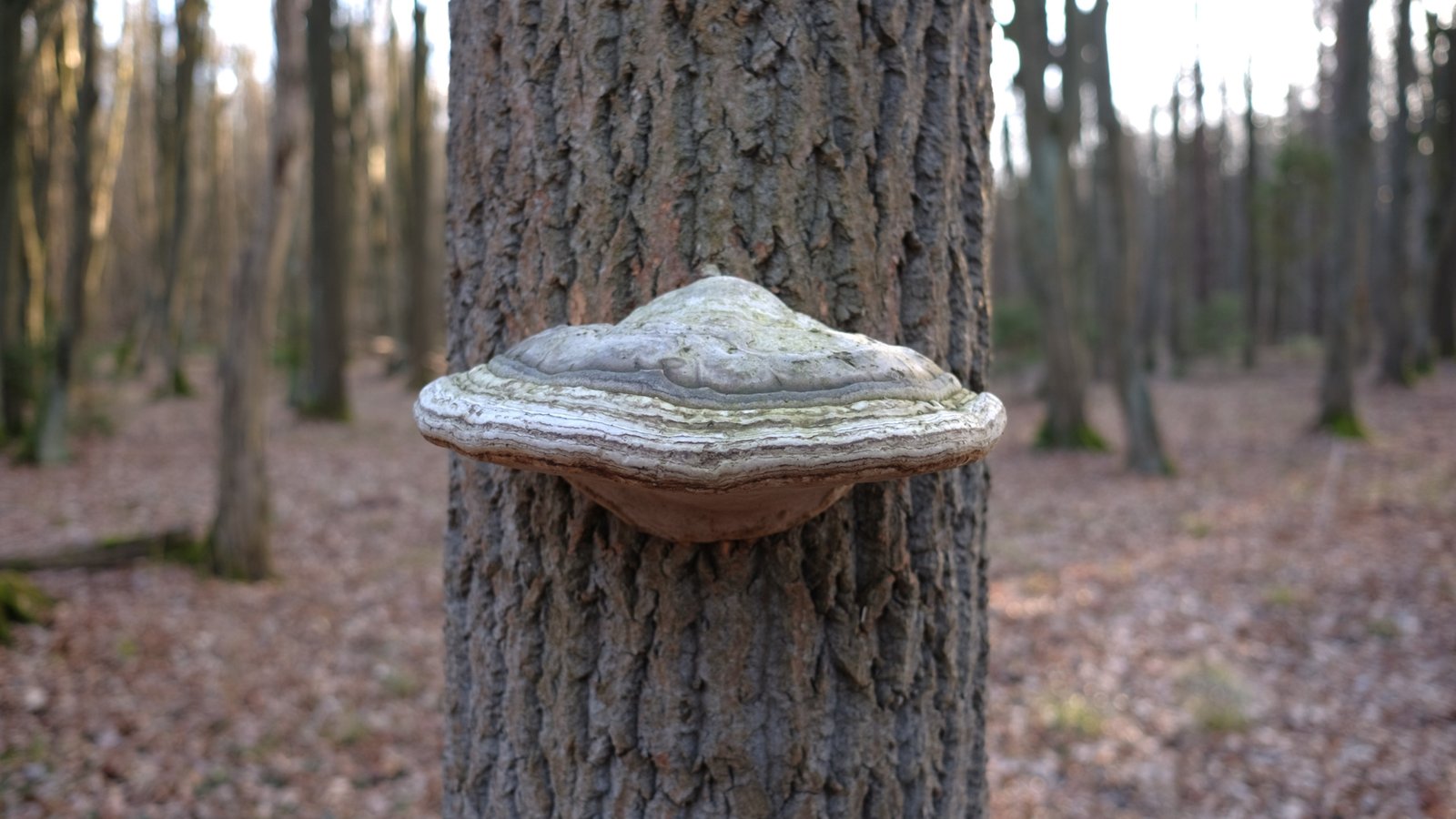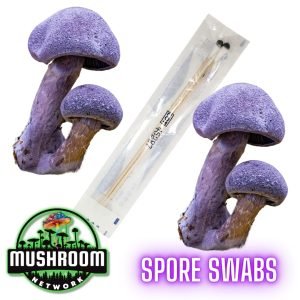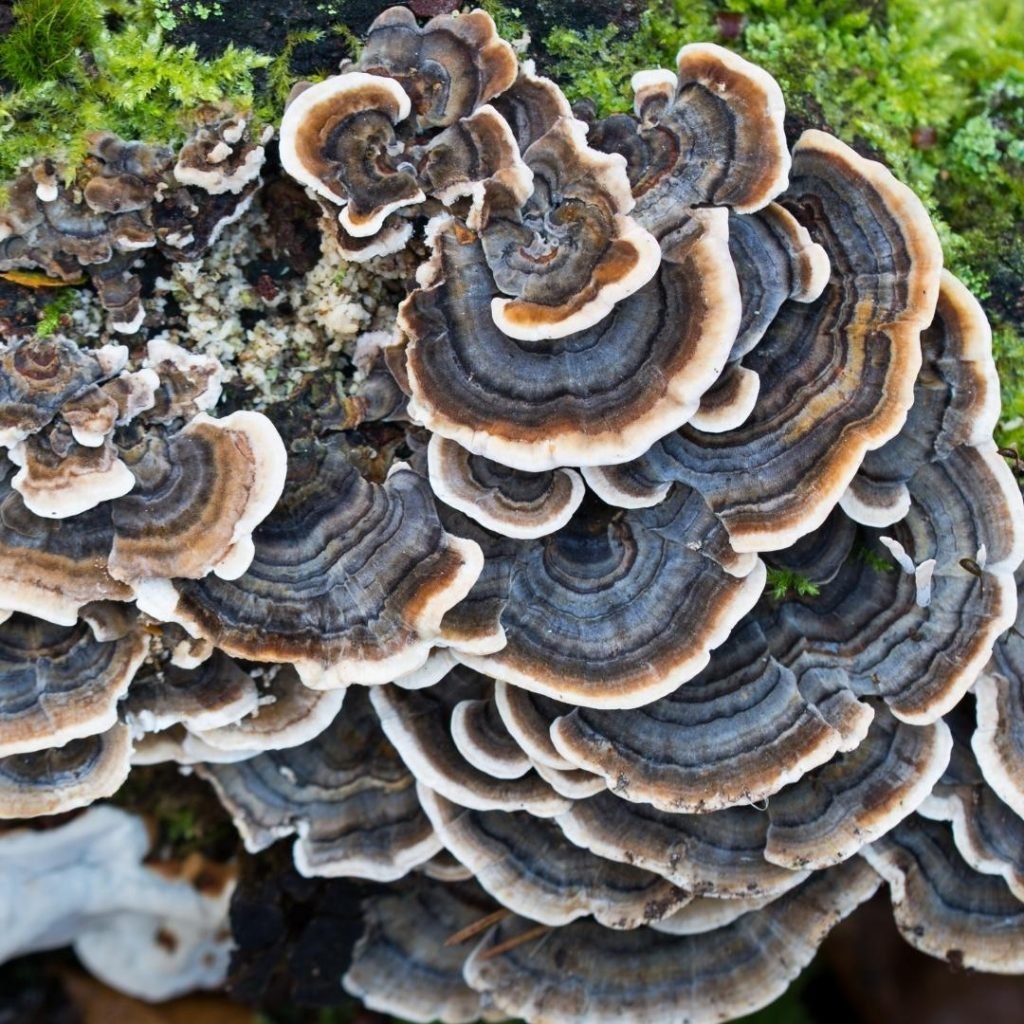In the moss-draped realms where time whispers secrets of old, the Agarikon mushroom stands as nature’s seasoned apothecary. Within its woody bastions, tales of ancient wisdom and healing abound. Join us on a spore-laden journey into the heart of the forest, where we unearth the mysteries of Fomitopsis officinalis – a fungus among us with the power to combat modern maladies with ancient might. Buckle up, mycophiles; we’re about to embark on a fungal odyssey that promises more twists and turns than a strand of DNA in a mycelial network.
Tread softly, for you walk on hallowed ground – or rather, decomposing logs, which just so happen to be the preferred hangout of the illustrious Agarikon mushroom. Esteemed by healers and hermits alike, this fungal elder boasts a resume that could put most modern medicines to shame. As we peel back the layers of bark and lore, prepare to be regaled with stories of Agarikon’s past exploits, its environmental entourage, and the hopeful horizons of its medicinal might. With humor as our compass and science as our map, we’ll navigate the complex web of Agarikon’s existence, from its towering tree trunks to the petri dishes of pioneering mycologists.
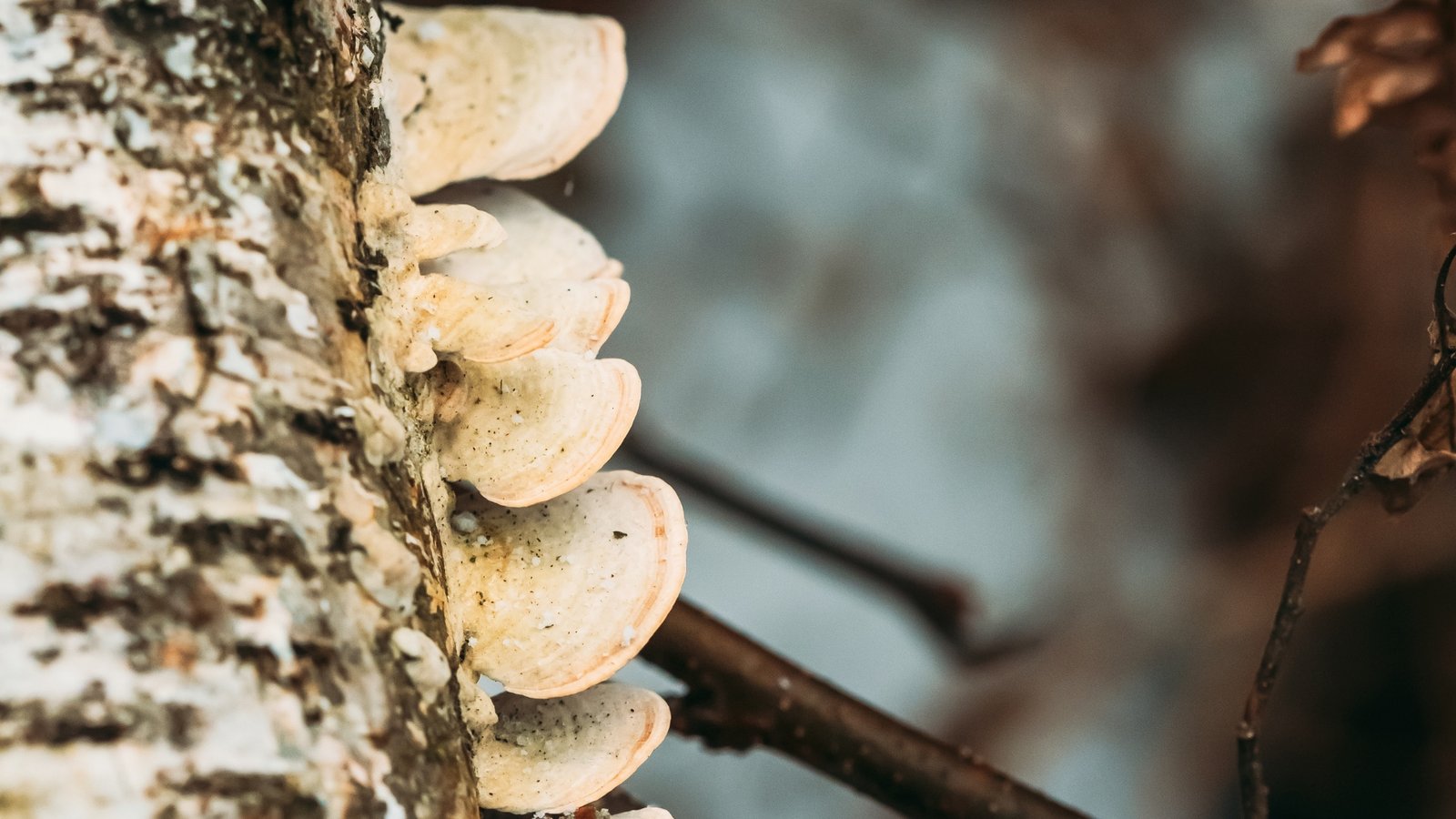
Mycelium Chronicles: The Agarikon Saga:
In the enigmatic embrace of Earth’s ancient woodlands, where the dance of light and shadow weaves a tapestry of the untold, the Agarikon mushroom emerges as a venerable protagonist in the saga of natural medicine. Its tale, as intricate as the mycelial networks from which it springs, spans millennia, cultures, and continents, painting a portrait of a fungi revered for its potent healing capabilities.
The narrative of Agarikon—also known by its scientific name, Fomitopsis Officinalis—traces back to the annals of Greek antiquity, where the luminary Dioscorides, in his seminal work “De Materia Medica,” chronicled it as a panacea capable of treating a myriad of ailments, from respiratory distress to the venomous bites of serpents. This early mention cements Agarikon’s place in the pharmacopeia of ancient civilizations, highlighting its esteemed status among those who first unlocked the secrets of herbal medicine.
Beyond the scrolls of Greek scholars, the lore of Agarikon mushrooms entwines with the shamanic traditions of Siberia, where these fungi were considered spiritual conduits between the human and the divine. Shamans, in their quest for wisdom and healing, would seek out Agarikon, revered for its ability to cleanse both body and spirit. This sacred usage underscores the mushroom’s dual significance as both medicine and mystical ally, bridging the tangible and the transcendent.
Yet, the saga of Agarikon doesn’t solely belong to the distant past or remote locales; it extends its roots to the temperate rainforests of the Pacific Northwest, a biodiversity hotspot and a modern-day sanctuary for these ancient organisms. Here, amidst towering conifers that have stood sentinel for centuries, Agarikon continues its life-sustaining act, a testament to the resilience and enduring legacy of nature’s pharmacy.
Fungal Fantasies: Habitat and Habits
To truly comprehend the essence of Agarikon, one must venture into the verdant realms it calls home. These aren’t mere settings but vibrant theaters of life where Agarikon plays a critical role in the cyclical drama of decay and renewal. The preferred stages for its performance are the trunks of ancient conifers—fir, larch, and spruce—where it manifests as a wood connoisseur, selecting only the finest, aged specimens for its sustenance and propagation.
Within these lush, cathedral-like forests, Agarikon assumes its ecological role with the solemnity of a guardian. By decomposing deadwood, it recycles nutrients back into the soil, an act that sustains the forest’s life web and bolsters biodiversity. This process is not just about breakdown but about giving back, about transforming death into life. Agarikon’s presence is thus emblematic of the interconnectedness of all forest beings, from the smallest decomposer to the tallest tree.
The habitats of Agarikon are more than mere physical locations; they are complex ecosystems that provide a glimpse into the intricate balance of nature. These fungi prefer the cool, moist embrace of old-growth forests, where the canopy’s dappled light fosters an environment ripe for their growth and the sustenance of a myriad of other species. It’s within these primeval woods that Agarikon thrives, away from the clamor of civilization, in places where the air is rich with the musk of moss and the whispers of the wild.
Yet, as idyllic as these habitats may seem, they are under threat. The relentless march of deforestation and climate change erodes the sanctuaries of Agarikon, making their conservation an imperative not just for the mushroom’s survival but for the health of global forest ecosystems. Protecting these environments is not only about preserving a species but about maintaining the ecological harmony that allows forests to flourish.
Through the chronicles and fantasies that encapsulate the Agarikon saga and its habitats, we are invited to marvel at nature’s intricacies and reminded of our responsibility to protect these ancient bastions of biodiversity. The story of Agarikon is a call to action—a plea to preserve the old-growth theaters of the world for future generations to discover and cherish.
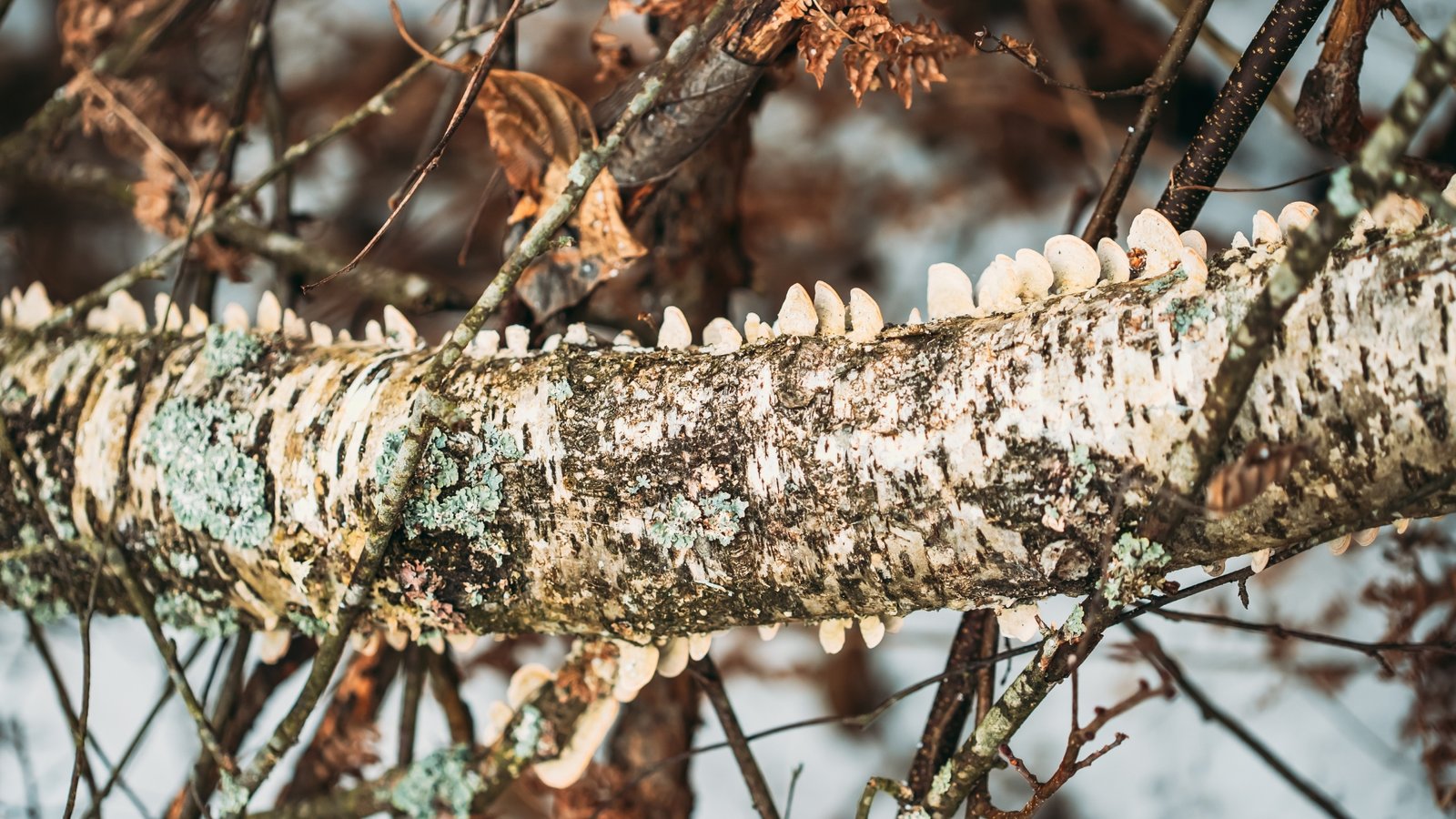
Spore Lore: Identifying and Understanding Agarikon:
The quest to identify Agarikon, Fomitopsis Officinalis, in its natural bastion melds the precision of a mycologist with the thrill of an explorer’s hunt. This journey into the heart of ancient forests is filled with intrigue and the occasional comedy of errors, as the untrained eye might confuse Agarikon’s noble form with less celebrated fungal forms.
Agarikon announces its presence through its distinct morphology – a conk of considerable heft, its woody body boasting a spectrum of colors from creamy white in youth to a dusky, aged brown. Its texture, too, tells tales of its age and wisdom, with a surface that feels both rugged and velvety under the fingertips of those fortunate to encounter it. Most distinguishing are its pores, which resemble a labyrinth from ancient myths, where each channel and cavity has been etched by time, housing the spores that carry its legacy through the winds.
Identifying Agarikon requires an understanding of its preferred residences – the trunks of old-growth conifers, where it performs its slow alchemy, turning wood to medicine over years, even decades. Unlike its fungal brethren that might flaunt their caps and stems in the underbrush, Agarikon maintains a solitary vigil on high, making each sighting a moment of serendipity and connection with the deep time of forest ecosystems.
The lore surrounding Agarikon identification is rich with anecdotes of mix-ups, where excitement led to misidentification. Tales abound of novice mushroom hunters exulting at the sight of a Ganoderma Applanatum, the Artist’s Conk, mistaking its similar form for the prized Agarikon. These missteps serve as humorous reminders of the importance of patience, respect, and continued learning in the art of mycology.
Potion or Poison: The Healing and Hype
The narrative of Agarikon’s functional (wellness) properties is as layered and complex as the mushroom itself, woven through with threads of historical reverence, modern skepticism, and the eternal human quest for healing. This section dives deep into the cauldron where myth, medicine, and modernity converge, stirring up the potent brew that is Agarikon’s legacy.
Historically, Agarikon was regarded as a panacea, a cure-all that could address the most daunting of diseases. From Dioscorides’ ancient pharmacopeias to the medicinal bags of Siberian Shamans, it was sought after for its purported ability to treat everything from tuberculosis to typhus. Yet, as with all tales of old, the line between fact and folklore is finely drawn, inviting both reverence and critical inquiry.
In the modern scientific arena, Agarikon has been subjected to rigorous scrutiny, with researchers aiming to demystify its components and validate its healing claims. Polysaccharides, found abundantly in Agarikon, have been spotlighted for their immune-modulating effects, offering promising avenues for treating viral and bacterial infections. Yet, the scientific community remains divided, with studies ongoing to conclusively determine the extent of Agarikon’s capabilities. This exploration into the mushroom’s bioactive compounds reveals a fascinating frontier at the intersection of traditional knowledge and scientific innovation.
Amid the hype surrounding Agarikon’s potential, it’s crucial to navigate the waters of excitement and expectation with a discerning mind. The mushroom, while promising, is not a magic bullet but rather a piece of a larger puzzle in understanding natural medicines and their role in holistic health. The allure of Agarikon’s ancient reputation must be balanced with evidence-based practices, ensuring that its use is both informed and sustainable.
In sum, the journey to understanding Agarikon is one of curiosity, caution, and continuous discovery. As we sift through layers of lore and scientific literature, the mushroom emerges not merely as a potion or poison but as a profound emblem of nature’s complexity and our enduring quest for wellness. The tale of Agarikon, from its forest throne to the modern laboratory, invites us into a deeper dialogue with the natural world, challenging us to reconsider what it means to heal and be healed.
The universe of mushrooms is expansive, each variant bearing its own unique charm and characteristics. The Marketplace on the 🍄 Mushroom Network is a testament to this diversity. It is a haven for those seeking a deeper understanding of the magical world of mushrooms. If you’re keen on learning more about this type of mushroom and other mushroom variants, this Marketplace is your ultimate resource.
Woah there, eager beaver! 🦫 The 🍄 Mushroom Network’s Marketplace is a smorgasbord of mycological marvels, but it’s VIP access only! 🔐 Log In or Become a Myco-Patron (Yup, still FREE!) to see what all the fuss is about. Trust us, you’ll want in on these shroomy shenanigans! 🍄🎉
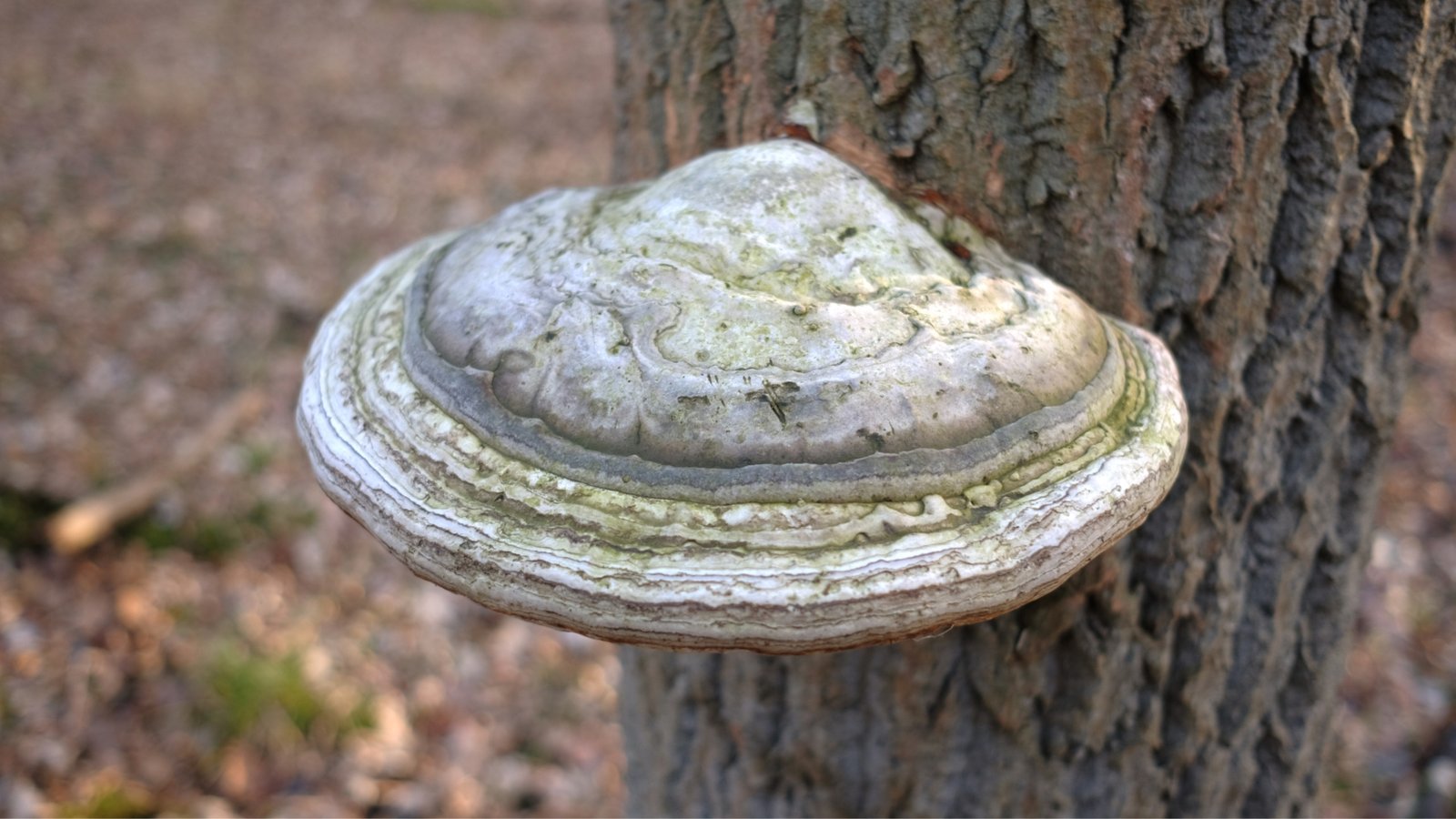
The Mycelial Network: Cultivation and Conservation:
The cultivation and conservation of Agarikon, Fomitopsis Officinalis, present a compelling saga of respect, science, and perseverance. As the bastions of ancient forests where Agarikon resides face the threats of deforestation and climate change, the mycological community—ranging from seasoned scientists to amateur enthusiasts—has rallied to the cause. This collective effort not only aims to preserve Agarikon’s natural habitats but also seeks to understand its cultivation intricacies, ensuring its legacy and therapeutic benefits endure.
Cultivating Agarikon: A Blend of Science and Patience
Cultivating Agarikon is akin to a masterclass in patience and precision, a meticulous process that mirrors the mushroom’s slow, deliberate growth in the wild. Unlike more commonly cultivated mushrooms, Agarikon requires specific conditions that replicate its natural old-growth forest environment. This involves sourcing the right substrates—typically hardwood logs or stumps from conifers like fir and larch, maintaining optimal humidity and temperature, and most critically, allowing for the lengthy maturation period that can span several years.
Innovative mycologists and researchers have embarked on this cultivation journey, experimenting with various techniques to encourage Agarikon’s growth outside its natural setting. From inoculating wood chips and logs with Agarikon spores to exploring the potential of indoor cultivation methods, these pioneers are laying the groundwork for sustainable Agarikon propagation. The goal is multifaceted: to reduce pressure on wild populations, provide a reliable source for medicinal research, and offer enthusiasts a chance to engage directly with the cultivation of this ancient remedy.
Conservation Efforts: Safeguarding Agarikon’s Future
The conservation of Agarikon extends beyond the cultivation lab and into the heart of its dwindling natural habitats. Conservationists and environmental organizations are at the forefront, advocating for the protection of old-growth forests that serve as Agarikon’s sanctuary. These efforts include lobbying for stronger environmental protections, conducting habitat restoration projects, and raising public awareness about the ecological and medicinal value of Agarikon and its forest home.
A key component of conservation work involves detailed ecological studies to better understand Agarikon’s role within its ecosystem, its reproductive biology, and factors affecting its survival. By mapping Agarikon populations and monitoring ecosystem health, conservationists can identify critical areas for protection and restoration.
Moreover, community involvement plays a crucial role in conservation efforts. Citizen science projects empower individuals to contribute to Agarikon’s conservation, whether through reporting sightings, participating in habitat restoration efforts, or advocating for policy changes. These community-based initiatives not only aid in conservation efforts but also foster a deeper connection between individuals and the natural world.
A Call to Action: Cultivating Awareness and Advocacy
The journey towards securing Agarikon’s future is a collective one, requiring the involvement of mycologists, conservationists, policy-makers, and the public. It’s a call to action for all who value the biodiversity of our planet and the untapped potential of its fungal inhabitants. By supporting conservation efforts, advocating for sustainable land management practices, and participating in community science, each of us can contribute to the preservation of Agarikon and the ancient forests it calls home.
In this ultimate act of homage to Agarikon, we are reminded of the interconnectedness of all life forms and the importance of each species in the tapestry of biodiversity. As we navigate the challenges of cultivation and conservation, we forge a path not only for the preservation of Agarikon but for a deeper understanding and respect for the natural world. Through these trials and triumphs, Agarikon’s legacy as a symbol of ancient wisdom and healing endures, inspiring future generations to cherish and protect the mycelial network that sustains us all.
Not sure where to start? The 🍄 Mushroom Academy offers a wide range of courses tailored to your needs. Whether you’re a beginner eager to learn or an experienced mycologist looking to broaden your knowledge, the 🍄 Academy has something for everyone.
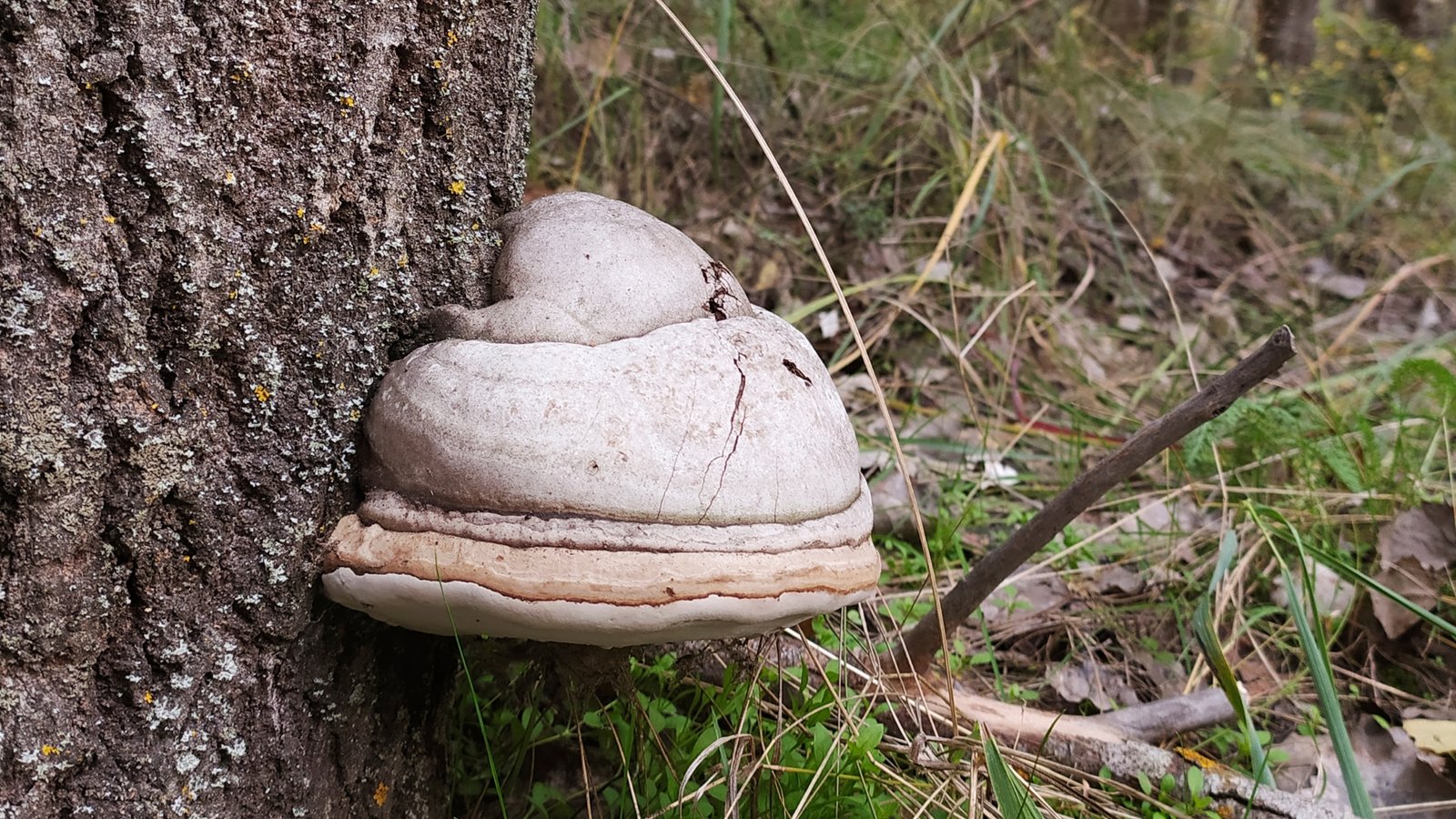
Myco-Musings: A Sporadic Conclusion:
The Last Laugh: Mycelium and the Meaning of Life
As we draw the curtain on our mycological adventure with Agarikon, it’s time to ponder the broader implications of what this ancient fungus teaches us about life, interconnectedness, and the resilience of nature. This final reflection isn’t just a farewell; it’s an invitation to continue exploring, learning, and marveling at the complexity and beauty of the fungal kingdom.
Agarikon, with its formidable presence and centuries-spanning lifespan, serves as a poignant reminder of nature’s endurance and the delicate balance that sustains life on Earth. Its ability to thrive in the remote corners of ancient forests, offering its medicinal properties to those who know where to look, speaks to the wisdom of the natural world—a wisdom that often goes unnoticed in our fast-paced, human-centric lives.
The laughter we’ve shared over the whimsical world of fungi and the reverence inspired by Agarikon’s storied past highlight a profound truth: nature is both healer and teacher. In every spore, every mycelial thread, there’s a lesson about survival, adaptation, and the intricate web of relationships that bind all living things. Agarikon, in its silent, steadfast way, teaches us about the strength found in symbiosis and the importance of preserving the environments that have cradled life for millennia.
As we reflect on the mycelium’s role—as nature’s great connector and recycler—we’re reminded of our place within this vast, interconnected network. The mycelium’s efficiency in breaking down the old to nourish the new mirrors our own potential to foster growth and regeneration, whether in our gardens, communities, or personal lives. The mycelial network embodies the essence of transformation, demonstrating that from decay comes new life, and from darkness, the possibility of discovery and enlightenment.
In contemplating the meaning of life through the lens of mycology, we uncover a deeper understanding of our own existence and our responsibilities as stewards of this planet. Agarikon’s journey through time is a testament to the resilience of life and the enduring power of nature’s cycles. It challenges us to think beyond our immediate concerns, to embrace the complexity and diversity of life, and to act in ways that honor and sustain the natural world for generations to come.
Our exploration of Agarikon and its realm may have reached its conclusion, but the journey into the heart of mycology is endless. With each spore carried by the wind, each root intertwined with mycelium, we’re invited to continue our quest for knowledge, to foster a deeper connection with the natural world, and to embrace the lessons it offers. In the mycelium, we find not just the meaning of life, but the means to enrich it, to heal our planet, and to weave a future where humans and fungi thrive together in mutual respect and harmony.
Let this sporadic conclusion be not an end but a beginning—a first step into a world where the laughter of discovery and the awe of understanding propel us toward greater appreciation, conservation, and integration of the fungal kingdom into our lives and our collective consciousness. As we move forward, let us carry with us the legacy of Agarikon: a beacon of resilience, interconnectedness, and the sheer, unending wonder of the natural world.
Love what you’re reading? Make it FBO (Facebook Official) with us! 🤘🏼 Hit that subscribe button on YouTube, follow our Facebook Page, join our FB Group – Wood Wide Web, and chirp along with us on Twitter/X. While you’re at it, peep into the 🍄 Mushroom Network’s Marketplace—where our Network shelves change faster than a Pink Oyster (Pleurotus Djamor) pins!
Recommended Reads:
Red Reishi: The Immortal Mushroom
Our journey today takes us deep into the world of Red Reishi, often known as...
Read More...RECIPE: Stir Fry Mushrooms in Butter, Garlic, and White Wine
Introduction: Embark on a culinary journey with this exquisite mushroom dish, where the earthiness of...
Read More...Mushrooms on the ISS: Sustenance and Science
Space, often seen as humanity’s final frontier, has been the setting for numerous groundbreaking experiments....
Read More...Advanced Techniques in Mushroom Cultivation: Unlocking the Potential
Mushroom cultivation is as much an art as it is a science, and for those...
Read More...Whoa there, Spore Sport! 🍄 Looks like you’re not logged in yet. Don’t you know what you’re missing? MYCO-CREDITS! Imagine all the fungal fun you could have. It’s like finding a Morel in May and not picking it. Tragic, right? Log In or Become a Myco-Patron and start racking up those credits. It’s more rewarding than finding a mushroom in your backyard! 🌟🏡

